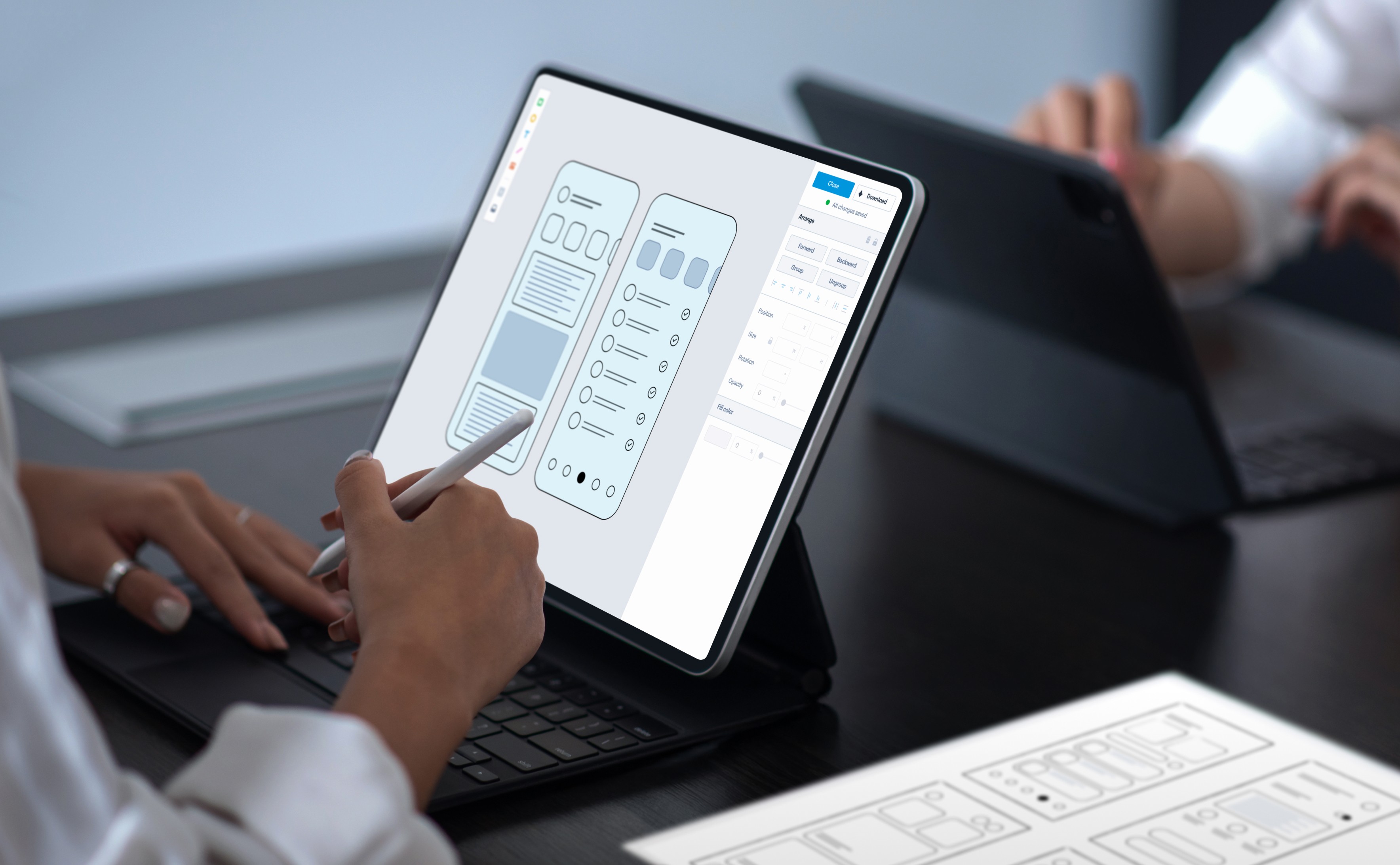Headless vs. Modular Commerce: Deciding the Best Fit For Your Business

- E-commerce Architecture: An Overview
- What is Headless Commerce? How Does It Work?
- Pros and Cons of Headless Commerce
- What is Modular Commerce?
- Pros and Cons of Modular Commerce
- Modular Commerce Vs. Headless Commerce: Key Comparisons to Consider
- Headless Vs. Modular E-commerce: Which Approach is Right for Your Business?
- E-commerce Architecture: An Overview
- What is Headless Commerce? How Does It Work?
- Pros and Cons of Headless Commerce
- What is Modular Commerce?
- Pros and Cons of Modular Commerce
- Modular Commerce Vs. Headless Commerce: Key Comparisons to Consider
- Headless Vs. Modular E-commerce: Which Approach is Right for Your Business?
Choosing an ideal technology model for your e-commerce business revolves around the following factors: business goals, resources, and capabilities. According to a recent Statista report, e-commerce is remarkably expanding at 6.9 CAGR, and the market size will reach $3.5 trillion by 2025. To stay competitive, online businesses must keep up with evolving e-commerce trends and dynamic consumer requirements.
Every detail matters to your business once it reaches a specific extent of maturity. This level is where you need to abandon the solutions you’ve depended on previously to build a composable commerce or e-commerce system for your specific business needs. In this context, the modular commerce approach is a priority. By adopting a modular approach, e-commerce companies could be responsive to varying demands while customizing businesses to the most detailed and granular levels.
Headless commerce is yet another fastest-rising e-commerce trend. Implementation of traditional e-commerce is a direct approach. However, the adoption of headless commerce leverages high-level opportunities to adopt omnichannel personalization. In this e-commerce model, retailers who consistently innovate and seek to improve the customers’ commerce experiences have their focus.
However, what exactly distinguishes headless e-commerce from modular e-commerce? This blog is going to be a guide that points towards a headless vs. modular approach to e-commerce and the ways to pick the right option for your business.
E-commerce Architecture: An Overview
A traditional e-commerce model facilitates the coupling of the front-end interface with the back-end infrastructure including the database. With the monolithic architecture, the front-end, which includes site templates and design, gets tightly coupled with the back-end code that manages payment processing, checkout, inventory management, and other major functions.
When the buyer loads the page to fetch the product information, the front-end, and back-end code run to gather necessary product details from the database and render the page. Using a templating system and content management tools, you can customize content without modifying the core code. However, the tradeoff is that brands are confined to the capabilities and templates provided by the chosen e-commerce platform.
What is Headless Commerce? How Does It Work?
Headless commerce revolves around the concept of separating business logic infrastructure and the storefront itself. Rather than bringing all components together into a platform, it lets the front-end and back-end function independently.
While the front-end delves into the visual presentation and user experience, the back-end emphasizes ensuring data access through hosting data storage, APIs (Application Programming Interface), and key business logic. Putting it simply, ‘headless commerce’ defines a software architectural pattern in which the front-end UI layer (head) is separated from the back-end logic engine (body). Hence this is termed ‘decoupling’.
Headless commerce depends on API technology to determine flexibility. APIs form a bridge that connects the front-end and back-end. This also makes sure that the data exchange is flawless with great access to functionality. Reports state that the global market value of headless commerce is expected to hit $13.08 billion by 2028. Why? Because, headless commerce introduces innovation, exceptional omnichannel experiences, and effortless integration with modern technologies.
API proxy plays a major role in headless architecture while acting as an intermediary, managing communication among front-end and back-end systems. It offers decoupling that helps components function independently. The term “proxy” here describes a dynamic agent, with seamless communication and flexibility within a headless system.
Pros and Cons of Headless Commerce
Pros | Cons |
|---|---|
| It enables decoupling the back-end and front-end, helping use any technology for the front-end. It helps build highly unique user experiences. | Deploying and managing headless systems are sophisticated and require technical expertise. |
| Enables sharing content across various platforms, to improve lead generation, conversions, and marketing opportunities. | High upfront investment due to integrations, customizations, and hiring experts. |
| Improves scaling and performance in high traffic. The architecture adapts to the evolving technological advancements. | Extensive customizations and integrations are required to fulfill business needs, demanding collaboration from developers with varied expertise. |
| Businesses can implement changes rapidly to align with the changing market trends, or customer preferences without back-end hindrances. | Implementation and customization can be more time-consuming than traditional systems, which delays the platform’s launch. |
| Increased access to customer data helps with improved marketing campaigns and personalized buying experiences for improved customer satisfaction. | Needs continuous technical support and resources, including infrastructure, developers, and support teams. |
| Faster load times and performance minimize bounce rates and cater to increased user experience. | Customizations and integration issues can lead to increased development timelines. |
| Integrates seamlessly with advanced marketing, analytics, and operations tools, for enhanced efficiency. | Compared to conventional platforms, these lack pre-built features, so expected functionalities need additional development. |
What is Modular Commerce?
Modular commerce is a development approach that depends on a composable architecture. Instead of using pre-packaged solutions that require configurations to act nicely together, developers go for their preferred set of tools to blend them into a personalized e-commerce experience. For instance, you could choose a vendor to handle payments, another to handle the back-end processes of your e-commerce storefronts, and another as your CMS (Content Management System). Modular Commerce utilizes advanced technologies and approaches, for instance, MACH (Microservices, APIs, Cloud, Headless), and Jamstack (JavaScript, APIs, and Markup). Combining these tools and methodologies helps merchants choose the finest applications and services for businesses without vendor lock-in. Modular architectures let them add/remove services as required.
Ready to upgrade your e-commerce strategy?
Let’s talkLoading...
Pros and Cons of Modular Commerce
Pros | Cons |
|---|---|
| Flexibility: Enables businesses to build a custom tech stack without sticking to a specific strategy. To address certain concerns, businesses can choose the best tools for front-end and back-end components. | Integration Complexity: A combination of technologies and tools needs the effort to ensure smooth integration. |
| Scalability: Lets businesses add/replace modules to address different user behaviors like AR shopping features, search functionality upgrades, and ensuring scalability and reliability. | Frequent Management: Modular systems need ongoing management and monitoring to ensure the components work harmoniously. |
| Customization: By choosing particular components, businesses can tailor solutions. This helps to personalize user experiences and improve adaptability with growing business objectives. | Compatibility Issues: Ensuring that modules from different vendors work efficiently could be cumbersome. Compatibility issues can occur while modifying or replacing components. |
| Faster Deployment: Businesses can test new features as individual modules without a huge investment. For instance, new features could be marketed to particular customers, evaluated for performance, and completely integrated once successful. | Increased Long-term Costs: While cost-effective initially, it can add to the ongoing expenses for integrations, multiple tools, and maintenance, which makes modular commerce highly expensive. |
| Cost-Effectiveness: Businesses can save costs by choosing only the services they require rather than deploying a whole platform. This approach enables gradual integration and payment only for the e-commerce services required. | Third-party Dependence: Businesses might rely on third-party vendors for critical modules. This can cause issues once a vendor discontinues a product, modifies prices, or fails to match the expectations. |
| Vendor Independence: Businesses are not connected to a single vendor’s ecosystem. With a vendor-agnostic approach, you enjoy the flexibility to mix and match tools from different providers, with access to the best solutions and the capability to switch components as required. | Continuous Updates: Needs regular updates and maintenance across every component to prevent security issues, performance gaps, and compatibility concerns, thereby improving overhead expenses. |
Modular Commerce Vs. Headless Commerce: Key Comparisons to Consider
Headless solutions are called so since the front-end is separated, while modular solutions are called so because they move beyond the initial separation to serve an array of methods to swap components through the front-end and back-end.
Modular and headless commerce decouple the front-end (interface) layer from the back-end (functionality) layer. In short, headless commerce concentrates only on the separation of front-end from the back-end, whereas modular commerce breaks down front-end and back-end layers into reusable components.
Let’s interpret this with an example: Salesforce Commerce Cloud offers headless commerce support with an API-first approach. It enables businesses to offer customized and omnichannel experiences with the capabilities of Salesforce like inventory management, CRM, AI-led personalization, etc.
Headless commerce infrastructure focuses on flexibility in how customers interact with the platform. However, modular commerce emphasizes back-end customization. It ensures that businesses can select, replace, and upgrade specific modules without any need to restore the entire system.
An example of this is Magento in its Adobe Commerce form, which offers a modular approach to commerce with component-based architecture. It lets businesses integrate different extensions like payment gateways, analytics, etc, to customize the platform to their requirements.
Headless commerce is suitable for retailers that offer highly customized user experience, while modular commerce exercises high control over vendor independence and operational functionality.
Headless Vs. Modular E-commerce: Which Approach is Right for Your Business?
In most scenarios, the traditional system is adequate for small stores as the structural and personnel expenses of other approaches aren’t that worthwhile. Headless commerce meets many requirements for large shops when the company demands a specific degree of flexibility. However, the company needs to have a core understanding of what it requires now and what it will need in the future.
While comparing, modular commerce is a better alternative when scalability undertakes a crucial role and features are subject to continuous change. Businesses need to analyze their requirements and estimate expenses for the system and in-house workloads. This helps to determine if the approach is useful and relevant. Moving from traditional to modular commerce, and then to headless systems, identify the right choice for you and your business based on your requirements and the costs involved.
Precisely, headless commerce works perfectly for enterprise businesses with omnichannel strategies while modular commerce is the ideal solution for growing businesses that need scalability but still wish to manage expenses and operational simplicity. The evaluation of goals, budget, and technical capacity is a pathway to identify the optimal approach for your business. At WAC, we help you with the best e-commerce development services, where we evaluate your goals, budget, and technical capacity to determine the best approach for your business.
While choosing a suitable e-commerce service provider, you need to consider the available modules and how well their own modules could be integrated. WAC stands as the leading e-commerce development company that offers Adobe Commerce, Salesforce development, WooCommerce development services, and many more. To know more about how we can help you with e-commerce development services, let’s connect today!
Not sure which approach fits your business?
Reach out to us!Loading...
- E-Commerce Statistics 2025: Key Trends, Growth Insights & Global Shopping Behavior
- Top Gen Z Shopping Trends Shaping eCommerce in 2025
- Adobe Commerce vs Commercetools: Choosing the Right eCommerce Platform for Scalable Success
- Composable Commerce in 2025: A Mainstream Solution for the Future of Retail
- E-commerce Trends That Are Powering Online Retail Forward In 2025
Discover Digital Transformation
Please feel free to share your thoughts and we can discuss it over a cup of tea.










